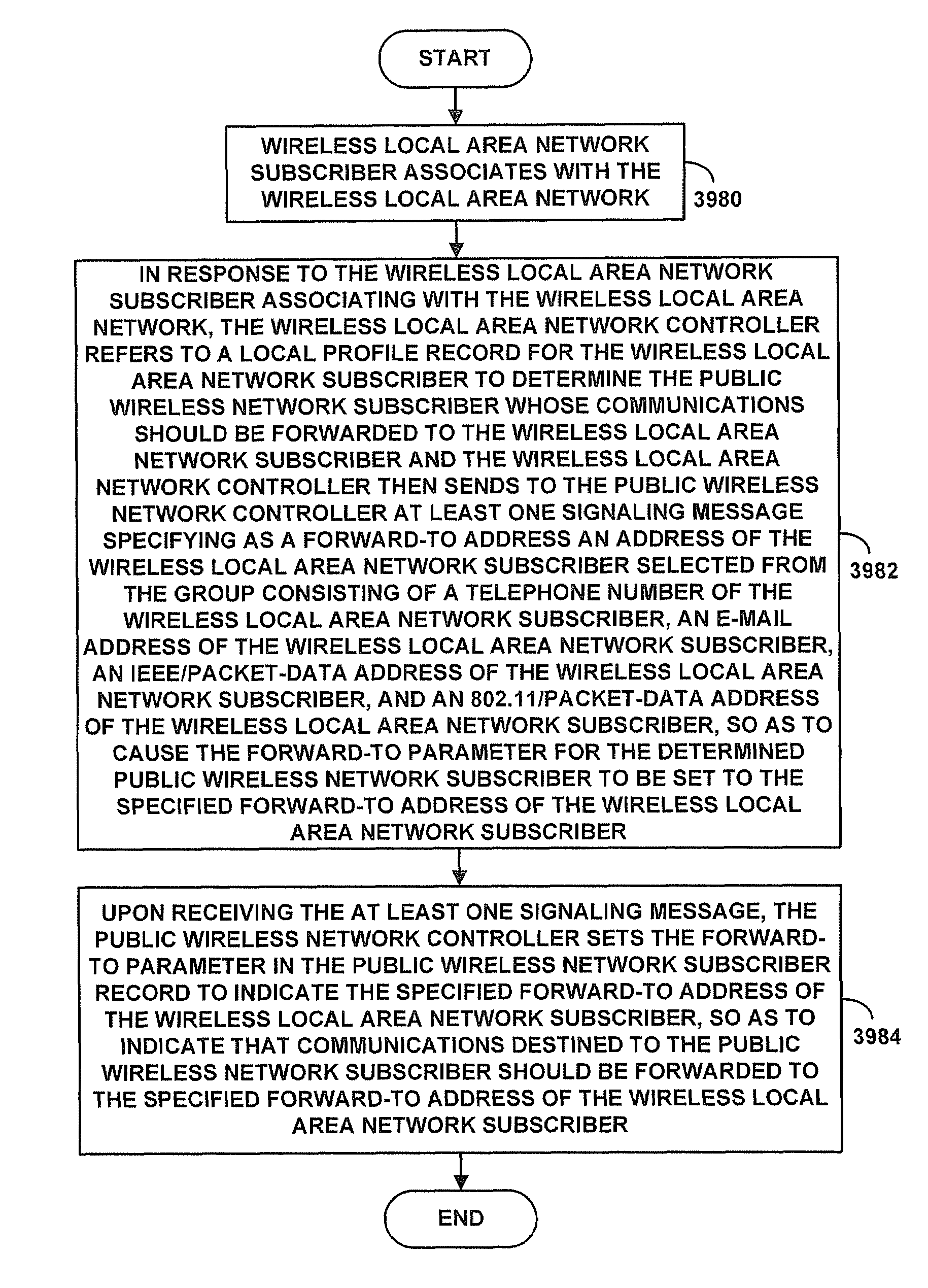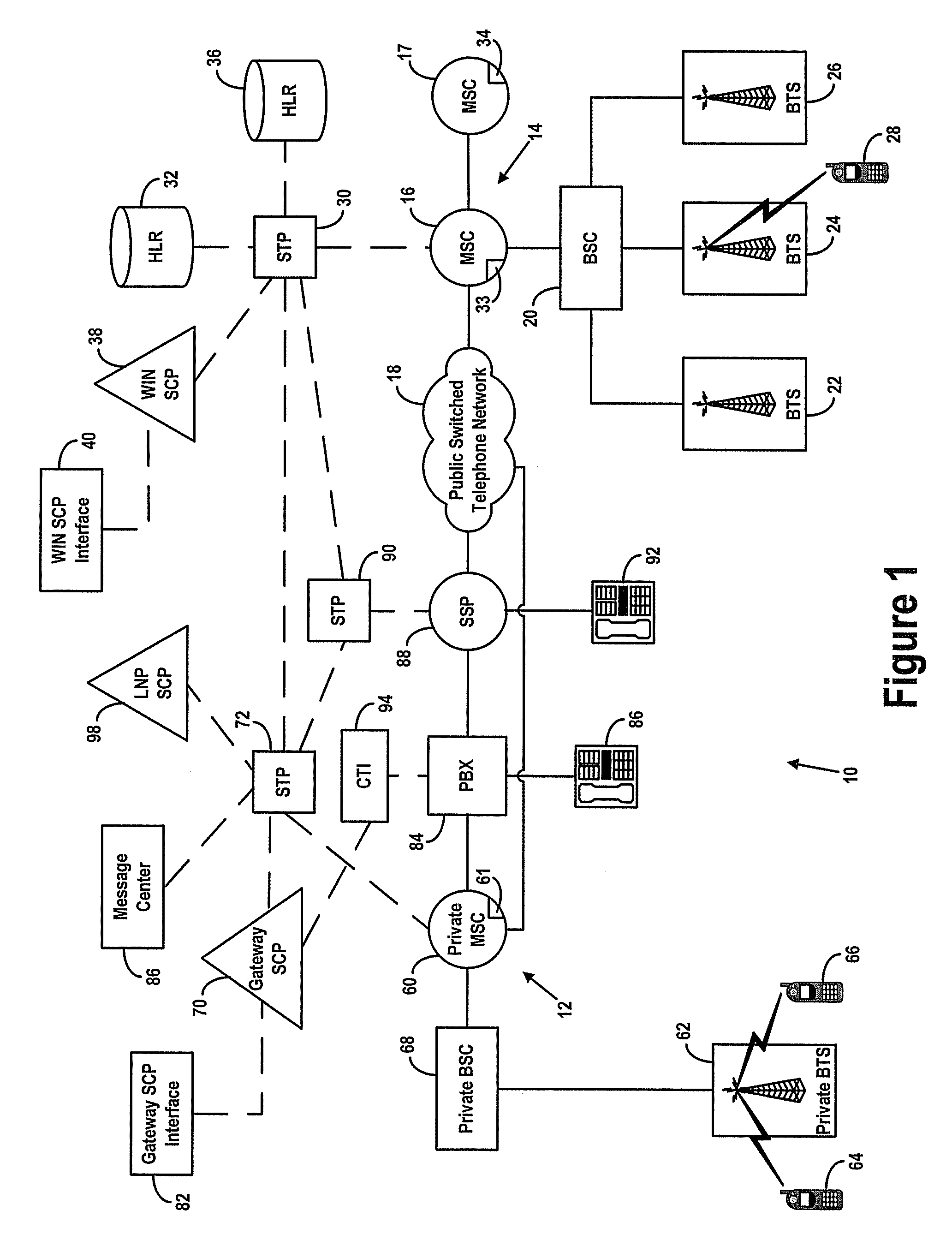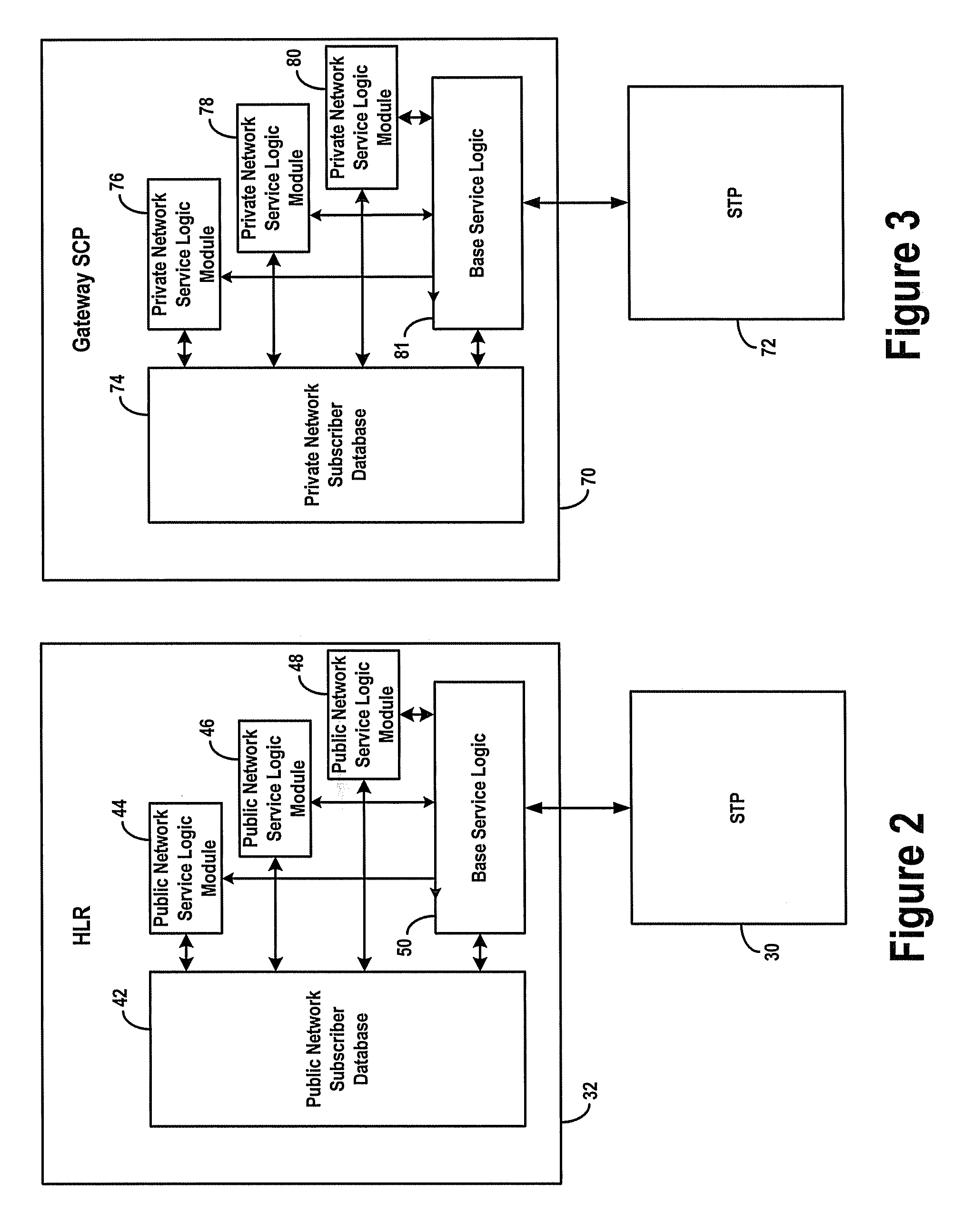Method and system for diverting wireless network communications
a wireless network and communication technology, applied in the field of private wireless networks, can solve the problems of unfavorable unfavorable work, and difficulty in locating and locating the right telephone, so as to improve the building coverage of wireless local area networks, improve work efficiency, and improve the effect of data ra
- Summary
- Abstract
- Description
- Claims
- Application Information
AI Technical Summary
Benefits of technology
Problems solved by technology
Method used
Image
Examples
embodiment 1
[0208]D. Wireless Local Area Network Controller Embodiment 1
[0209]In an exemplary embodiment, the communication-diverter system 2710 includes wireless local area network controller (WLAN controller) 2704. Referring to FIG. 27, the WLAN controller 2704 is shown comprising (i) a wired local area network server (wired-LAN server) 2705 coupled to (ii) a wireless access point 2758, and coupled to (iii) a WLAN subscriber profile store 2769.
[0210]The wireless access point 2758 provides base station functionality for the WLAN by providing access, over an air interface, for multiple WLAN subscriber mobile stations, e.g., WLAN subscriber's mobile stations 2764a and 2764b, onto the wireless local area network. The wireless access point 2758 may consist of a radio transceiver 2761, a wired-network interface 2763, and a bridging software application 2765 that conforms to the IEEE 802.11d bridging standard, or some other LAN-based wireless bridging standard.
[0211]In an 802.11 compliant WLAN, WLAN...
embodiment 2
[0227]E. Wireless Local Area Network Controller Embodiment 2
[0228]In another exemplary embodiment, the wireless local area network controller (WLAN controller) is configured as PBX server 2804 coupled to the wireless access point 2758, and coupled to the WLAN subscriber profile store 2767. Referring to FIG. 28, a simplified block diagram of such WLAN controller configuration is shown integrated into the communication-diverter system 2810. The simplified block diagram shown in FIG. 28 is similar to the simplified block diagram shown in FIG. 27, except as described herein.
[0229]The PBX server 2804 is coupled to the wireless access point 2758 via a shared media access mechanism, such as an Ethernet connection. The PBX server 2804 may communicate with the wireless access point 2758 using an IEEE 802.3 or other wired local area network (wired-LAN) protocol. Alternatively, the wireless access point functionality may be integrated into the PBX server 2804. The wireless access point functio...
embodiment 3
[0249]F. Wireless Local Area Network Controller Embodiment 3
[0250]In another exemplary embodiment, the wireless local area network controller (WLAN controller) is configured as VoP network server 2907 coupled to the wireless access point 2758, and coupled to the WLAN subscriber profile store 2767. Referring to FIG. 29, a simplified block diagram of such WLAN controller configuration is shown integrated into the communication-diverter system 2910. The simplified block diagram shown in FIG. 29 is similar to the simplified block diagram shown in FIG. 27, except as described herein.
[0251]In an exemplary embodiment, the VoP network server 2907 may encompass a wired local area network server (wired-LAN server) 2705, for instance, an IEEE 802.3 LAN server running a Voice-over Packet-data (VoP) application, such as a Voice-over-Internet Protocol (VoIP) application. The VoP, VoIP or other voice-over-packet-switched data network application provides telecommunication services over packet-swit...
PUM
 Login to View More
Login to View More Abstract
Description
Claims
Application Information
 Login to View More
Login to View More - R&D
- Intellectual Property
- Life Sciences
- Materials
- Tech Scout
- Unparalleled Data Quality
- Higher Quality Content
- 60% Fewer Hallucinations
Browse by: Latest US Patents, China's latest patents, Technical Efficacy Thesaurus, Application Domain, Technology Topic, Popular Technical Reports.
© 2025 PatSnap. All rights reserved.Legal|Privacy policy|Modern Slavery Act Transparency Statement|Sitemap|About US| Contact US: help@patsnap.com



